#okay but this actually feels like a high-stakes battle that ben would have to break up for everyone's safety!
Explore tagged Tumblr posts
Text
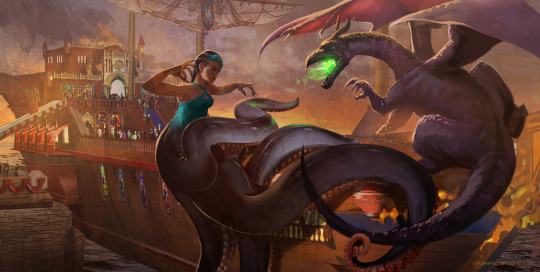
Early D2 concept art by Thomas Zenteno, and a real interesting look at the og look for the yacht (including some of the stained glasses), Mal's original dragon design, and also Uma clearly before they cast China Anne McClain.
#disney descendants#descendants#descendants 2#okay but this actually feels like a high-stakes battle that ben would have to break up for everyone's safety!#uma climbing on the yacht and mal getting in close like that to bite or burn her#also looks like part of the yacht is actually on fire already????
28 notes
·
View notes
Text
War of the Generations: Kyle Rayner vs Hal Jordan Fandom (1994-2004)
Trenchcoat Edgelords vs. Gray Pony Tail Comic Store Guys
There have been numerous vicious fandom wars, but this is the only one I can think of that, with my own eyes, I saw lead to actual fistfights that drew blood. This is one of the few times I describe a fandom battle and it is not a metaphor. You’re probably unfamiliar with this fight if you never hung out at Android’s Dungeon-esque comic book shops, or do not have at least one weird unmarried uncle.
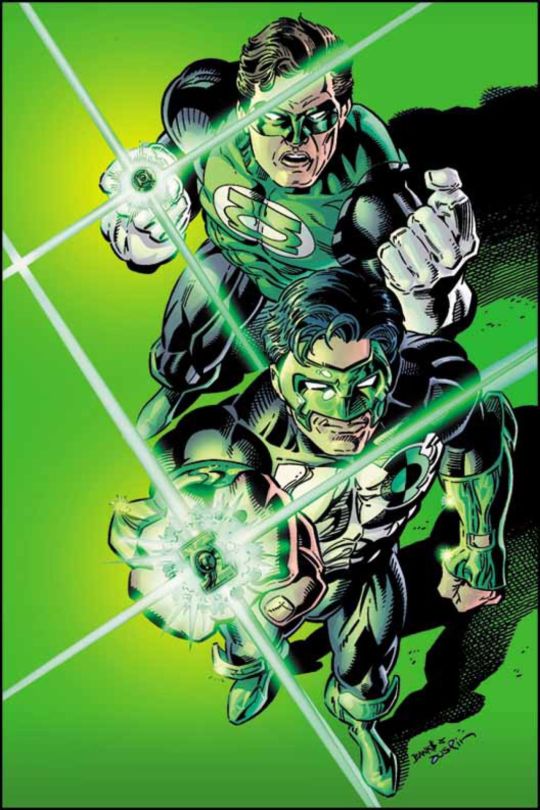
New characters, even replacement characters for established heroes, show up all the time. So it can be extremely hard to explain why this one in particular led to literally a decade of the most ferocious fighting. Why did this battle between fans of a replacement hero and fans of his predecessor become as immense and nasty as it got, when other characters didn’t? Why did young Kyle Rayner, GL replacement, get controversy when Wally West, Ben Reilly/Scarlet Spider, Thunderstrike, War Machine, and US Agent never did to the same scale?
Well, many reasons, but the main reason is that it wasn’t just a battle over one guy, but over a whole idea of what two wildly different kids of fans wanted comics to be, a vision of what superheroes would be going forward. That’s why this otherwise picayune fight had incredibly high dramatic stakes. Where was the heart of comics? Was it in breaking with the past that often locked comics up and fossilized them, moving in dynamic new directions, streetwise, and relatable, or was it found in moving with tradition, with classic ideas of heroes and science fiction? Was it found in relatability, or big idea scifi? In other words, this was not just a battle of a replacement character vs. the original, but over what comics would look like in the future, which is incredibly high stakes, by two groups equally invested in the outcome.
Rather, the crux of the conflict between Hal and Kyle fans was a generational divide. This was, quite literally, a war of the generations. You only need to see the characters to understand that. Hal Jordan was one of the old guys; he was one of a few heroes from the 50s who was allowed to age gracefully, since he got gray hair at the temples in the 1980s. Kyle on the other hand, was a Peter Parker-esque quirky, handsome and relatable young early 20something, an artist in New York.

To be clear, this was a huge, organized fight, not just people snapping at each other in the early internet and in comic book stores (although there was plenty of that). Hal Jordan, the original GL, had die hards so intense that they were in something called HEAT – Hal’s Emerald Action Team. And it was not a little fanzine group, either. It was more akin to a non-profit like the World Wildlife Fund, in that it had dues paying memberships (I was one). HEAT actually sponsored a scholarship for talented young art students called the Gil Kane Memorial Scholarship. They literally put out an ad in Wizard magazine for their group. Imagine a fandom group creating a college scholarship from their dues.
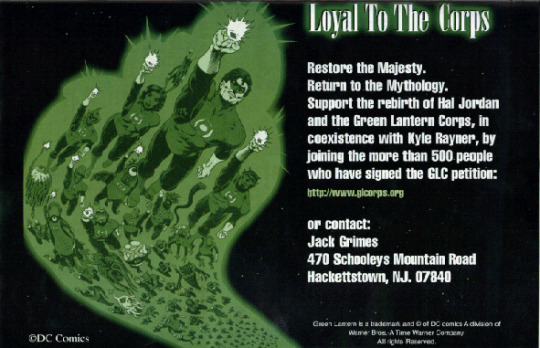
It’s often very hard to discuss motive in conflict like this because we are entering the realm of the glandular, non-rational reaction. Ironic, because these two groups consider themselves rational men, but because they tend to have low emotional intelligence, are unaware that rationalism is caused not by ignoring your feelings, but by understanding them and holding them in balance. Okay, I honestly believe this: if they had replaced Hal Jordan and the other Green Lanterns with a girl, or with a tough black guy ex-army vet, it would have gotten far less hate from the particular group of people who ended up forming HEAT than a hot young guy who lives in New York and is a cool artist with an arty loft apartment like the characters in the musical Rent or the kids on Friends, and gets laid a lot with hippie chicks. Hot young guys are threatening to you if you’re getting older, and cool things are threatening to you if you’re uncool. And I honestly believe that is why, for example, books like the hip-hop infused Milestone Comics and anything by Christopher Priest absolutely tanked in the 90s: the guys who made up the comics store audience were turned off, even if books like the Crew and Static Shock vibed with the culture as a whole.
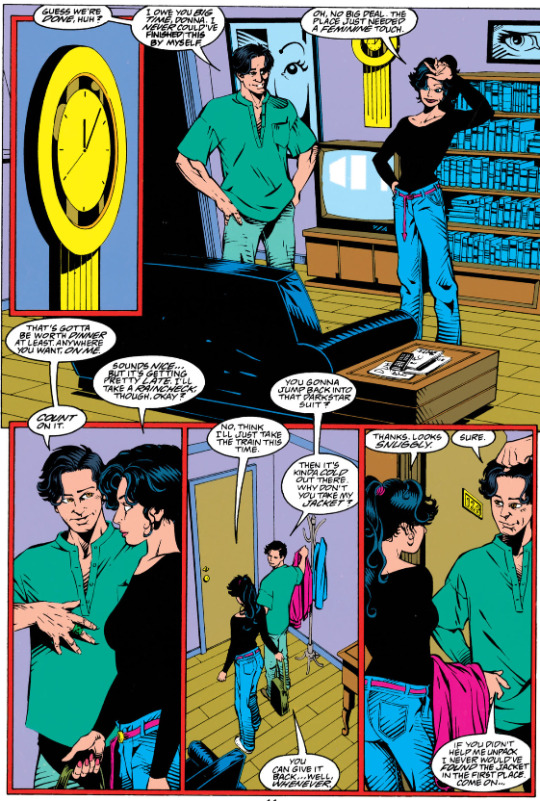
Add to all of the above the general glandular-level hate born in envy that men have for a certain kind of attractive young effeminate guy like Justin Bieber or Robert Pattinson. People hated Kyle Rayner for the same non-rational, glandular reason guys hated Justin Bieber in the 2010s. Likewise, on the Kyle side, there was a lot of rationalization for why Hal was boring and lame, but in the end, it ultimately came down to a visceral, glandular reaction to a guy that reminds you of authority figures, like your asshole assistant principal who spent high school terrifying you, or your cold, evil dad. And I can certainly understand why, if some cat-piss smelling comic book gray pony tail who is a dead ringer for Gary Gygax corners you and tells you anything, you believe the opposite. Never underestimate the persuasive power of coming off as “normal.”
It’s important to mention that part of the reason this generation gap was so pronounced was that DC had a lost generation of fans. If you started reading comics in the 70s and 80s, DC Comics were marginal. We have a vague idea that DC and Marvel were rivals, neck and neck like Coke and Pepsi, with dueling superguys, but at least in the 70s and 80s, it wasn’t even close to a competition, Marvel was winning hands down. Once Marvel got their own distributor in the 70s, DC Comics were a nonentity, barely making up a single digit percentage of the marketplace to Marvel’s overwhelming chunk. The implication of this is that, if you’re a long time DC fan, you probably started reading in the 50s-60s, since there really wasn’t an audience of DC fans who came in the next few decades. When DC started to revise their image and creative teams, getting rid of the old man workhorse artists (Curt Swan, Jim Aparo, Dick Dillin) and putting out Marvel style books like New Teen Titans, there was a huge influx of people into DC in the 90s, especially with the rise of the comics shop in the 90s as the main place comics are bought. To say there would be conflict between the new guard and the old is an understatement, and this was the flashpoint this conflict happened.

I mean, when Kyle Rayner fans called Hal fans “Hal’s Brigade of Loyal Virgins,” well, I hate to stereotype, but it stung because it is absolutely, completely 100% correct as a description of these people, almost always. If you really got invested in this on the side of Hal Jordan, you were obsessing over 2 decade old comics going back to the 50s, and the people who do this tend to be….how do I put this? Not normal. Especially at a time when comics were really marginal as a cultural force. Now they are at the white hot epicenter of culture, but no grown adult would admit to reading them then. Prior to 2001-2003 (Lord of the Rings feels like a cultural tipping point), if a woman entered the average comic book shop, they would draw gasps and all eyes would probably follow them. Because it seldom happened.
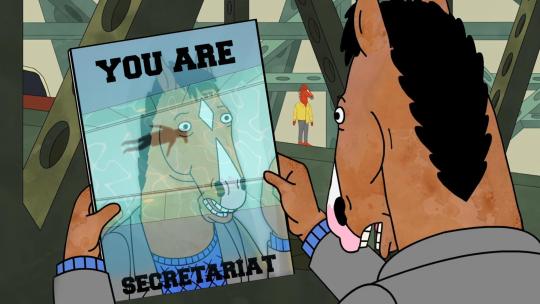
There’s also another element at work that you only see among old DC fans that went into this as well that is underdiscussed. They are often allergic to heroes experiencing temptation, vulnerability, or making mistakes, so obviously they’re drawn to the all-wise noble 50s father figures who are never wrong and resolve everything with some weird science trick (“don’t thank me, thank the gravitational pull of the moon!”), and who tend to always win cleanly. This type of person often enjoys projecting themselves into people like that, to deny any temptations or unpleasant character traits in ourselves. I hate playing armchair psychologist, but this cries out for it. It’s like when Bojack Horseman steadfastly refused to admit that his childhood hero, Secretariat, was anything other than a noble sports hero, when he was involved in illegal betting and was corrupted by fame. So obviously replacing Hal Jordan with a mortal Peter Parker type who was extremely fallible did not give them what they wanted and expected out of this book.
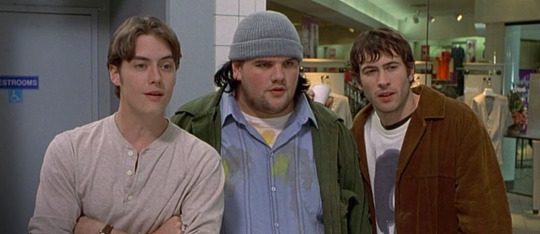
Alright, that’s the Hal Jordan fans, who are the Kyle Rayner fans? Well, like I said, in the 90s, comic book stores were at their peak. The Kyle fans were the young guys where the weekly comic store run was the center of their social world, the Kevin Smith types who tell bawdy Kryptonite Condom jokes. They wanted a relatable hero, and they put more of a priority on characterization and inner struggles over scifi explosions and time travel plots. They were also edgelords (to use a modern term) and loved rebellion. They also loved Japanese sword collecting. They tended to be fascinated by two things that came out at the exact same time: the tabletop game Vampire the Masquerade, and Mortal Kombat. In fact, no less of an authority as Rob Liefeld says that the reason comic stores went away in the 90s isn’t because of a speculator crash from people buying comics as an investment (which I always found utterly unconvincing as an explanation since I barely saw any speculators…how many could there be?) but because this particular audience, the Kyle Rayner guys, who went to comic book stores instead started to play video games instead.
They had very good reasons to want to be edgy and rebel. Since the cold war was won and neoliberal capitalism victorious, the system seemed all powerful and monolithic and invulnerable. As Margaret Thatcher said, “there is no alternative.” No wonder the culture was dominated by both rebellion and conspiracy theories about people in power (e.g. X- Files).
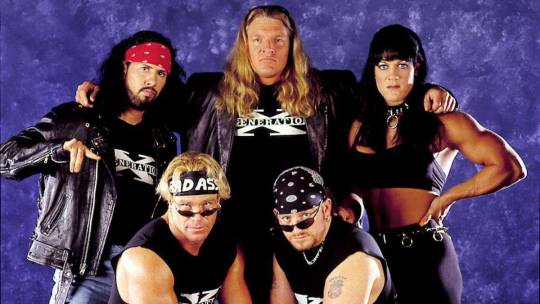
What’s more, in the 90s there was a strong desire to break from the past. It was all seen as slightly embarrassing. If you were a Star Trek fan in the 90s, you may remember that the original series was absolutely fringe and impossible to come across. Next Gen made a point to reference it as little as possible. There were barely any original series toys or merch as compared to today, as people were just embarrassed of the old show. TOS was like a crazy old uncle at the family reunion nobody talked to. And it wasn’t just Star Trek, either. Take the 80s icon, Hulk Hogan, who people absolutely hated in the mid-90s and booed, which is why turning evil was the best decision he ever made. When Doctor Who was canceled in 1989, nobody cared too much because it was seen as cringey and embarrassing and cheap, and the reaction was more surprise it was still on than shock it was canceled.
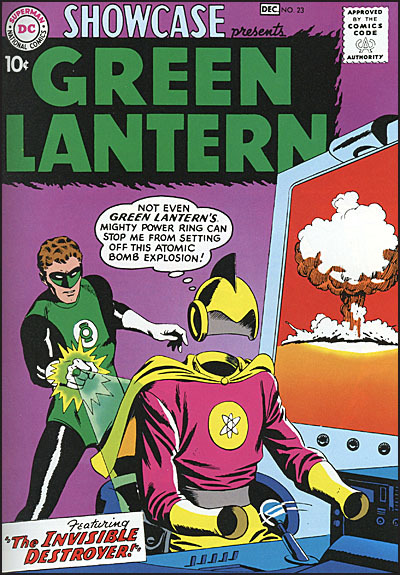
There’s something else, too. Nowadays, we have a much slower rate of cultural change: something from 2002 is probably more similar to something made today than something from 1982 is to something from 1962. In 1994, a comic from 1964, where Hal was created, must have felt like it came from the Old West or Victorian England.
This weird theme of generational conflict, because comics had a strange dual audience of old Gygax-esque gray pony tail guys and trenchcoat wearing edgelords who love Lobo and Mortal Kombat, absolutely defined the 1990s in comics, which is why comics from that era sometimes don’t make sense when read by normal people. Most of the time, the comics took the side of the gray pony tails because the guys creating this were gray pony tails, the ultimate example of the winners writing the history books. Mark Waid and Alex Ross made a generational battle the theme of Kingdom Come (one of the numerous reasons this comic didn’t age well) and he made an explicit point to not use Kyle Rayner as Green Lantern in a way that was so assholic that I actually kind of weirdly admire it.

There was one guy who used Kyle Rayner a lot: surprisingly, Grant Morrison. He saw Kyle’s Peter Parker like vulnerability and uncertainty as a strength to the character. The fact he was new, and a bit defiant of having to bow to tradition and held back, made us sympathize with him (yet another metacommentary). Kyle was overawed by the League, and in his words, “it was like playing with the Beatles.” To this day, there are a lot of people who turned around on the character because of his role in Morrison’s run on JLA.
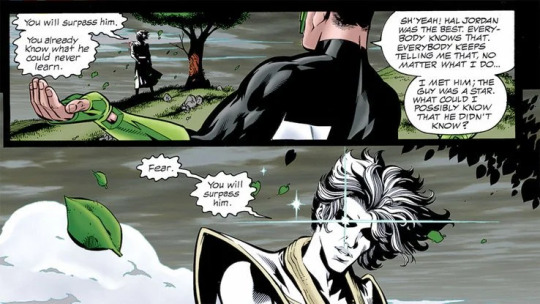
This is probably not exactly going to surprise anyone reading this who have followed my blog for a while, but I was on the side of the traditionalists then, and I was a Hal guy. I felt that the best thing that comics had going for them was their history, and to make a break with that, so cleanly, was a pointless waste. Remember: they didn’t just get rid of Hal Jordan, they had to do it in the most alienating way possible, turned a childhood hero heel, and they eliminated the scifi weirdness of all the funny space monsters. Yes, the GL Corps was clearly a product of the 50s and 60s, staffed with bugeyed monsters and Flash Gordon looking planets, but it had big cool scifi ideas in outer space that were at times legitimately breathtaking, ones that the more Spider-Man like Ron Marz GL stories didn’t have. Nevertheless….
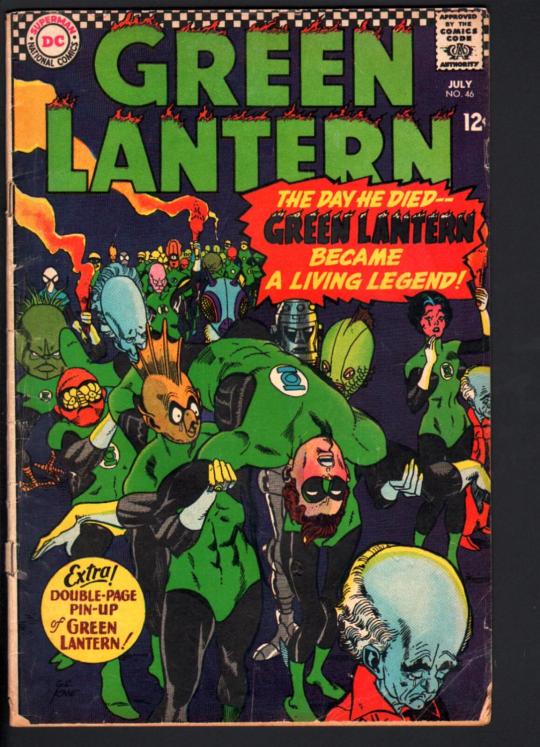
As strange as it sounds, looking back and revisiting all this almost two decades later, I find myself having a lot of unexpected sympathy for the Kyle fans and their position. If you’re young, old people are terrifying and the power of tradition is absolute. It feels like their ideas have a death grip on the world and they have the power to crush anything new you might come up with or ever aspire to be or do. I wonder if, in today’s world, where everything is a reboot of the same 10-15 eighties movies, younger people might feel this crushing weight of the past on them even more sharply than ever. “Why can’t we tell our own stories to describe the world around us the way previous generations did? Why is it that if I want to make a dramatic show about relationships, in order to get made, it has to be about friggin’ Archie and Jughead? Why can’t we have our own heroes the way generations before them had?” I mean, after all, even Hal was not the first Green Lantern, but a 50s update and rejiggering of a World War II character. Why does nostalgia have such a grip over us? Hal vs. Kyle was the beginning of that kind of fight and I have a feeling the biggest one is yet to come.

As a rite of passage, every generation gets to kill the previous one’s idols. Why? Because sometimes the old people are wrong. I remember reading Rolling Stone’s list of the greatest albums of all time, and at the top they put Sgt. Pepper’s Lonely Heart’s Club Band. It was controversial (personally, I don’t think it’s even the best Beatles album, really) but what added fuel to the fire was how Rolling Stone explained that decision: “you had to be there, man, the album changed the world.” In other words, it was up there because of Baby Boomer nostalgia and that generation’s total cultural dominance for a long period of time. I think guys who say the Beatles actually suck are unpleasant tedious edgelord shitheads, but I get it, I understand the desire to pit your living will against the dead hand of tradition.
The most extraordinary thing about the Kyle vs. Hal conflict is that it (mostly) ended. I never expected that. This is astonishing to me, I expected the ape inhabitants of a post atomic future earth to continue this fandom battle until the sun winks of existence.
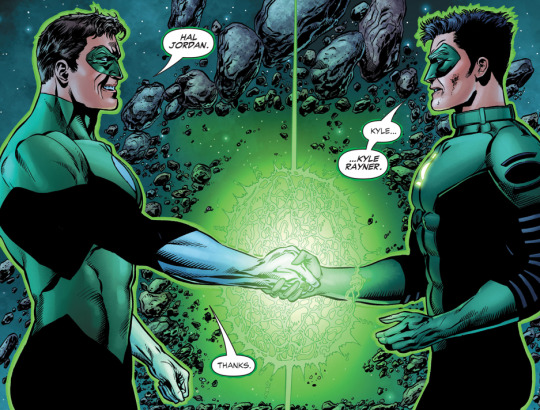
Why did this battle come to an end? Part of it was that a gigantic chunk of the Kyle Rayner audience simply vanished with the comics store collapse, as they switched to video games. In other words, HEAT just ended up winning by default. It’s not just that, though. The other thing that happened was that people acquired a different relationship to the past in the post-9/11, sentimental, non-ironic world as opposed to just kneejerk defiance. People started to rediscover old comics as valuable for their great creative power, and all the great works of the 2000s were like miniature primers on comics history, like Astro City and Alan Moore’s ABC. What changed in the 2000s is that people stopped calling them old comics, and started calling them classics. Around the 2000s, comics started getting a strange veneration about them, possibly because themes of good vs. evil and heroic purpose resonated after September 11th and the War on Terror, when the superhero movie came into style.
Most of all, it got resolved with Geoff Johns’s Green Lantern run. They brought Hal and all the other classic GLs back in a way that was, in many ways, as epochal and consequential as when Hal Jordan was introduced to replace Alan Scott. The GLs were recontextualized in an emotional spectrum with different colors. Nekron and the Weaponeers of Qward, the deep GL lore, as it were, which was mostly untouched since “Stainless” Steve Englehart left the book in the 80s, came to the fore. They simultaneously delivered modern-style action mixed with nerd nostalgia, at the best possible moment, the right book at the right time, when nerd nostalgia became a cultural force capable of moving mountains, right when superheroes became the white hot epicenter of pop culture. I don’t think it’s wrong to say that being on this book, the right one at the right time, paid for Geoff Johns’s house. Kyle Rayner of course, was right in the middle of this, his unique stature as the only GL for a while acknowledged, but let’s not kid ourselves, Kyle was pushed offscreen for Sodam Yat and Simon Baz.
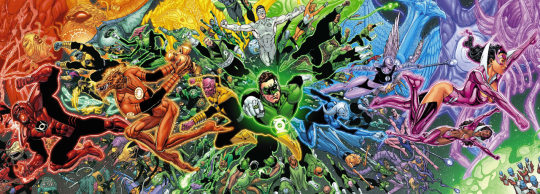
The Geoff Johns GL is now a part of the background, a product of a moment where nerd nostalgia was starting to be a powerful force. It’s not a coincidence that Geoff Johns took over writing GL the same year the first vinyl funko pops were made (around 2004). All that was in the ether. And I think we are now starting to see a reversal of things. There was once something very bold, self-confident, and defiant when Geoff Johns had veneration for classic old heroes, but now they’re everywhere and took over the world, the overculture, the same way the inescapable boy bands were in the 2000s.
I am not sure what comes next, but the pendulum is starting to swing on this. The classic characters created by cigar chomping WWII vets are now a kind of oppressive overculture and things are bound to change, because they can’t continue going the way they used to. I’m not sure what form the next great cultural/generational battle will take, but I expect there to be a lot of anti-superhero stories.
317 notes
·
View notes